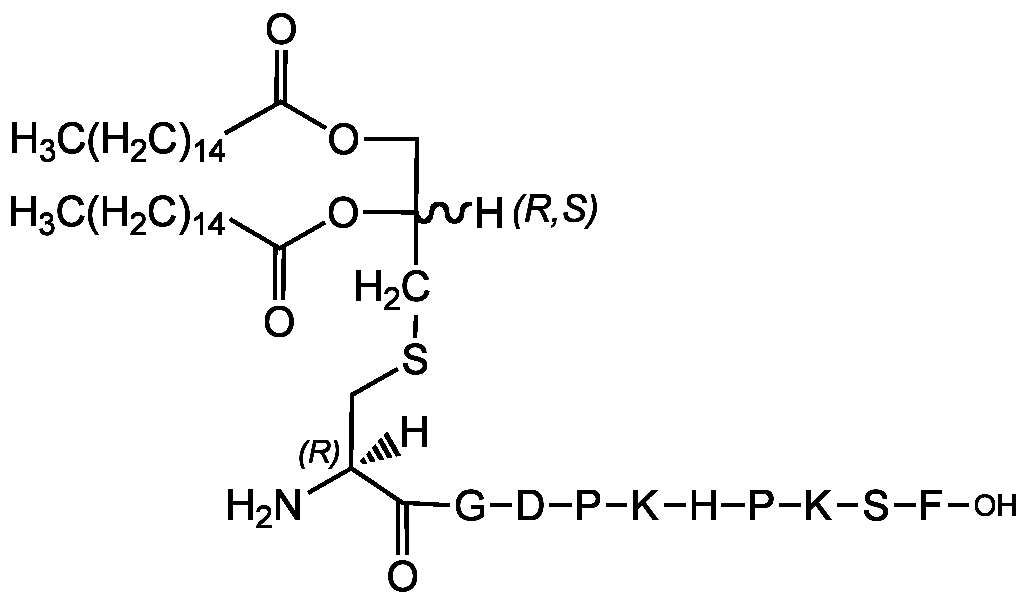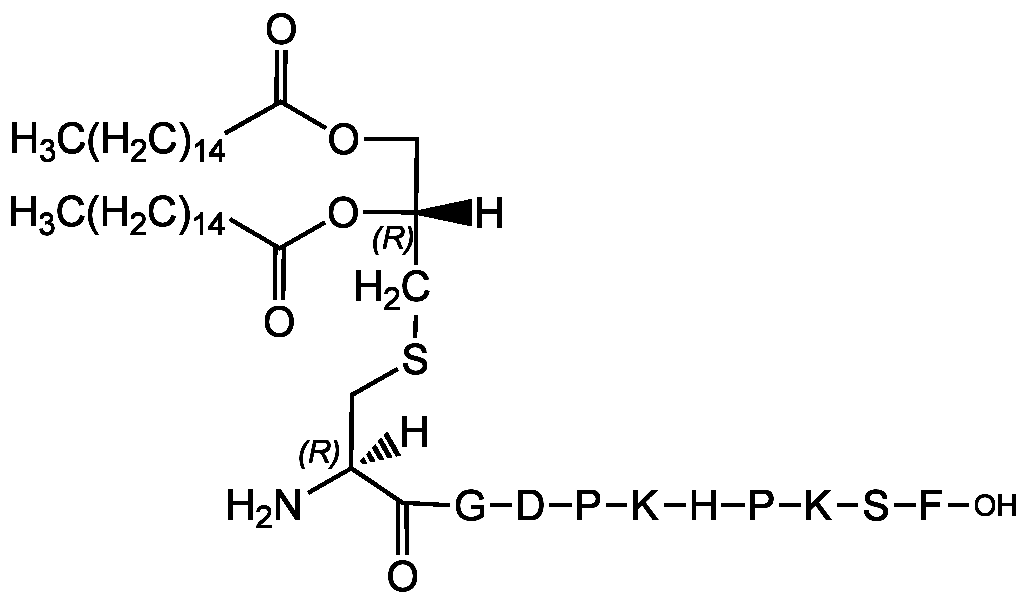
Chemical Structure
FSL-1
AG-CP3-0009
CAS Number322455-70-9
Product group Chemicals
Molecular Weight1666.2
Overview
- SupplierAdipoGen Life Sciences
- Product NameFSL-1
- Delivery Days Customer10
- CAS Number322455-70-9
- CertificationResearch Use Only
- Molecular FormulaC84H140N14O18S
- Molecular Weight1666.2
- Scientific DescriptionChemical. CAS: 322455-70-9. Formula: C84H140N14O18S. MW: 1666.2. Synthetic. FSL-1 (Pam2CGDPKHPKSF) is a synthetic lipoprotein that represents the N-terminal part of the 44kDa lipoprotein LP44 of Mycoplasma salivarium. Stimulator of TLR2/TLR6. Inducer of TNF-alpha production in macrophages. Upregulates proinflammatory cytokines. Activator of the proinflammatory transcription factor NF-kappaB. - FSL-1 (Pam2CGDPKHPKSF) is a synthetic lipoprotein that represents the N-terminal part of the 44kDa lipoprotein LP44 of Mycoplasma salivarium [1]. FSL-1 is a mixture of R,R and R,S stereoisomers Stimulator of TLR2/TLR6 [2-11]. Inducer of TNF-alpha production in macrophages [4]. Upregulates proinflammatory cytokines [3, 4]. Activator of the proinflammatory transcription factor NF-kappaB [3].
- SMILES[H]C(COC(=O)CCCCCCCCCCCCCCC)(CSC[C@]([H])(N)C(=O)NCC(=O)N[C@@H](CC(O)=O)C(=O)N1CCC[C@H]1C(=O)N[C@@H](CCCCN)C(=O)N[C@@H](CC1=CN=CN1)C(=O)N1CCC[C@H]1C(=O)N[C@@H](CCCCN)C(=O)N[C@@H](CO)C(=O)N[C@@H](CC1=CC=CC=C1)C(O)=O)OC(=O)CCCCCCCCCCCCCCC
- Storage Instruction-20°C,2°C to 8°C
- UNSPSC12352200


![FSL-1 [322455-70-9]](https://www.targetmol.com/group3/M00/3F/1D/CgoaEGbZkKqEGAArAAAAACVfvKI587.png)
